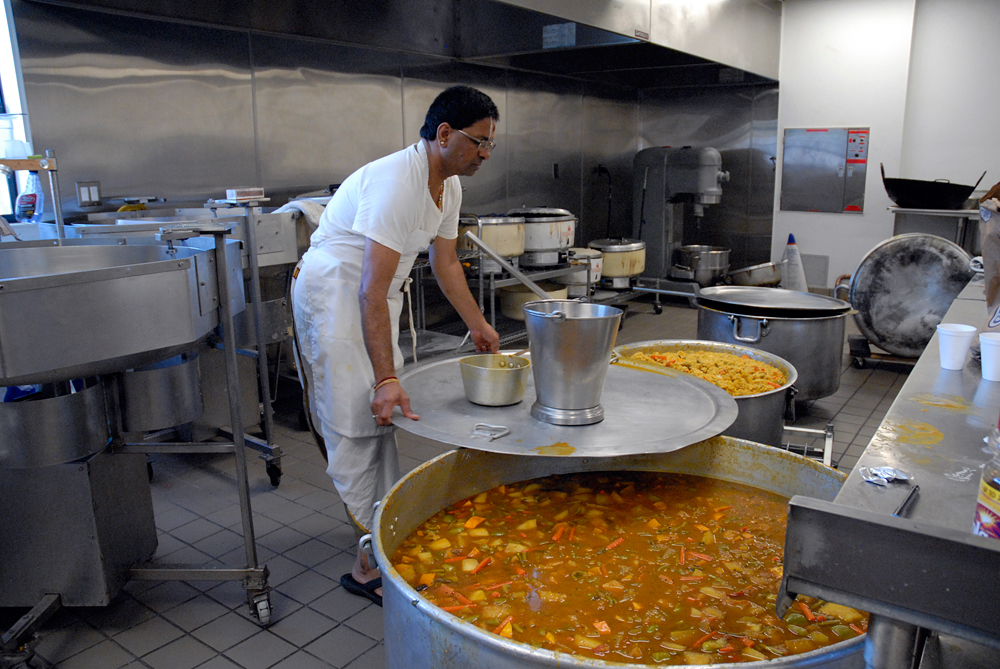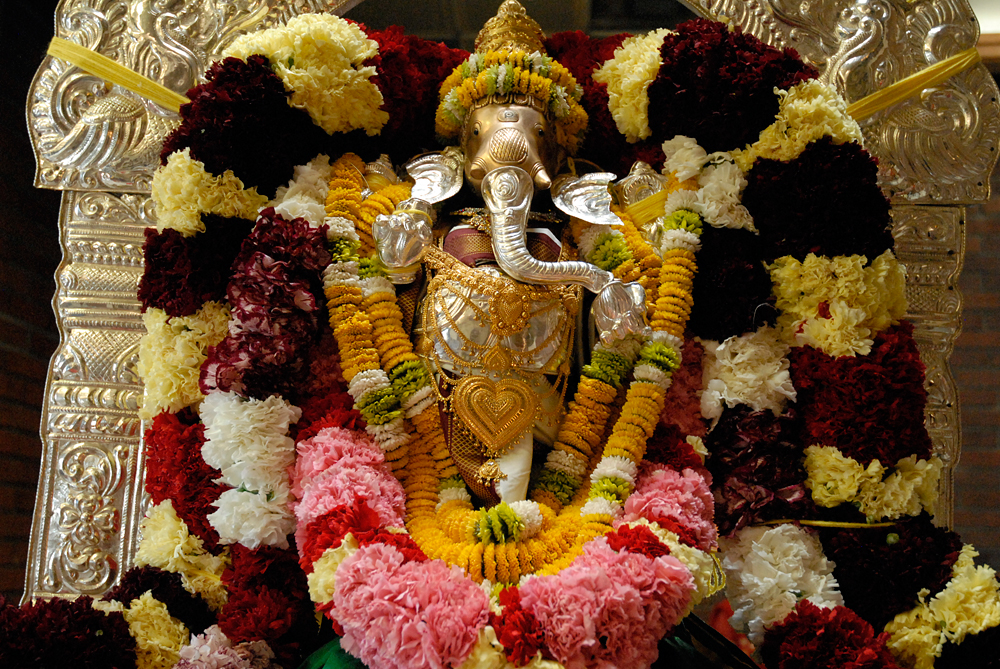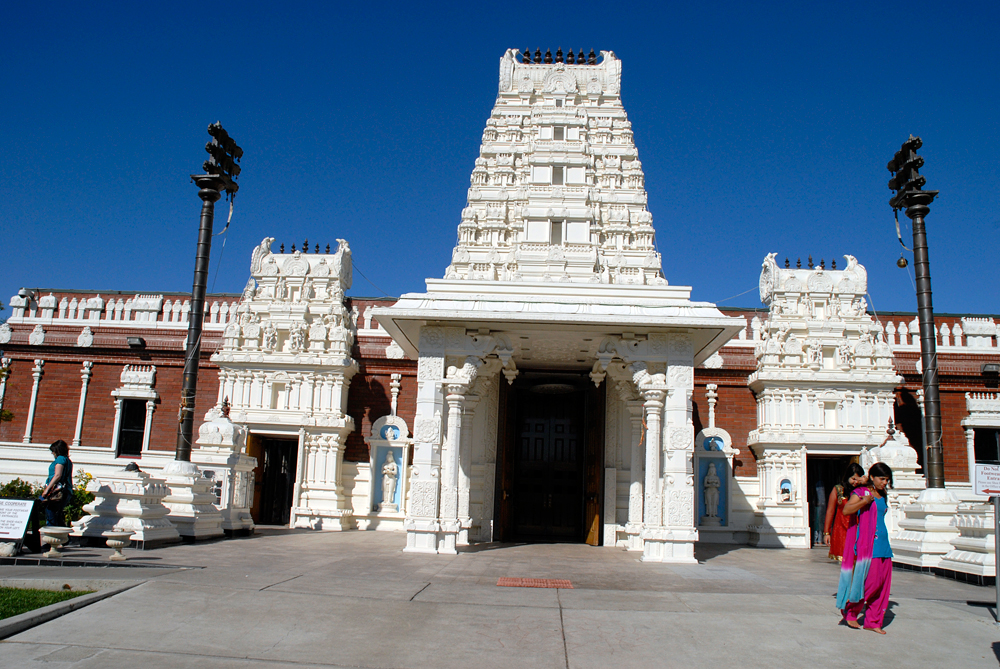
It’s hard to overstate the awe and wonder you feel turning into the parking lot of the Shiva-Vishnu Temple. Rising incongruously from the quiet suburban streets of Livermore, the white, intricately carved spires of the main hall hint at another world within. Inside, as a priest chants from Vedic scriptures, a couple thousand devotees from all over the Bay Area make the rounds, visiting shrines for all the major Hindu gods.
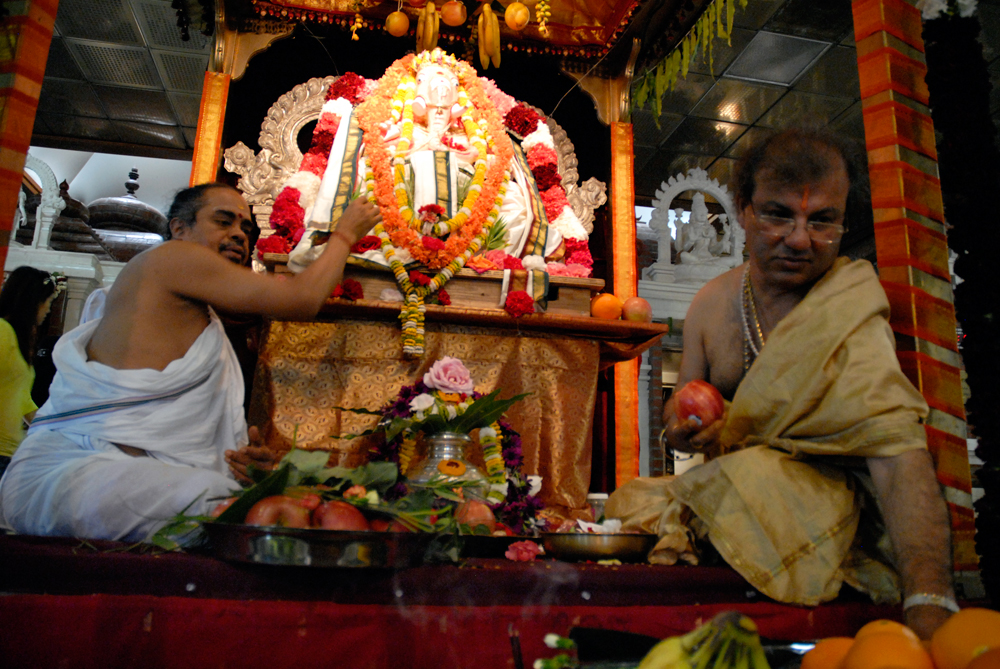
The temple boasts about 25,000 people on its email list, though many families regularly attend smaller temples close to home. They come to Shiva-Vishnu for the major celebrations. There are more than 30 Hindu temples in the Bay Area, and the number is exploding, along with the Asian Indian population, thanks to Silicon Valley.
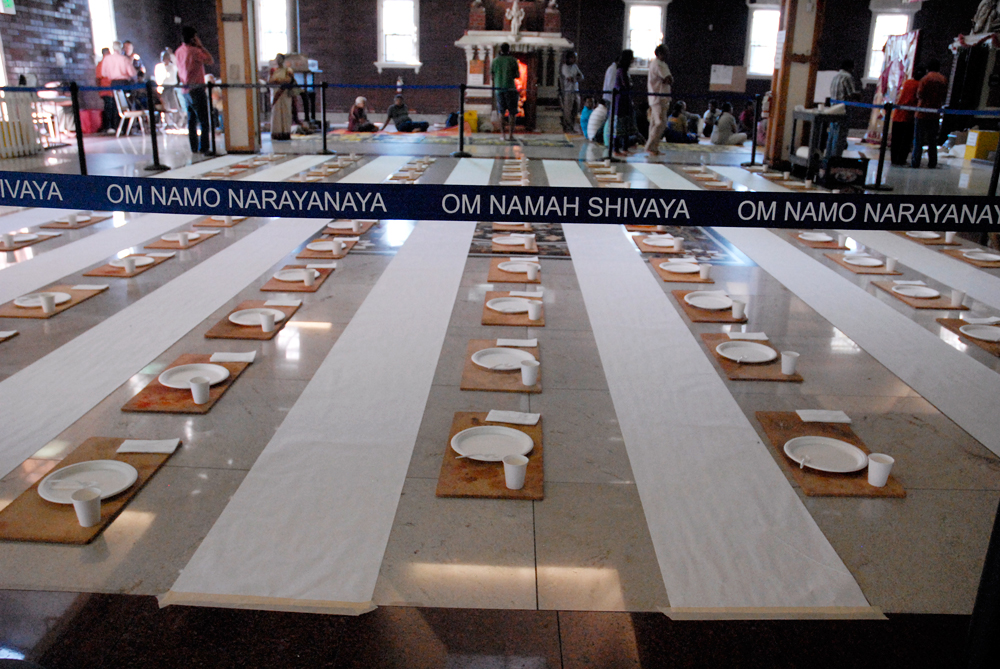
Everything in the temple is designed to focus the attention on engagement with the divine: the chanting of Vedic scriptures, the tinkling of bells, garlands of flowers, incense, and, of course, food. There are two commercial-sized kitchens on the temple grounds where food is prepared for the gods and the public. The cooks are devout volunteers from the community. In the sacred kitchen they wear dhoti, a traditional loincloth, and kum kum, or red powder, on their foreheads, reflecting the fact the cooking is a spiritual practice. Framed Vedic mantras are posted on the walls.
